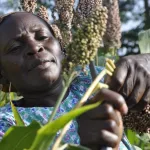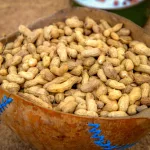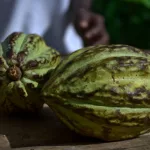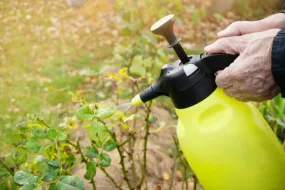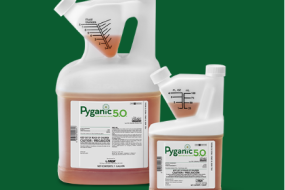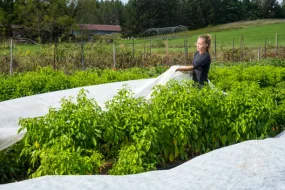Exploring the World of Heartwater (Cowdriosis)
Welcome to our journey into the intriguing realm of Heartwater, also known as Cowdriosis. If you’re a livestock enthusiast or a concerned farmer, you’re in the right place. We’re about to embark on a quest to understand this tick-borne disease that affects our beloved livestock.
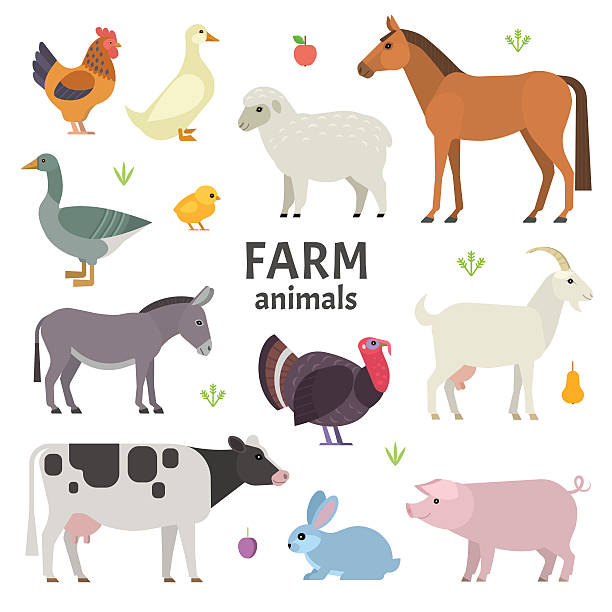
Why Heartwater Matters
First things first, why should you care about Heartwater? Well, if you’re raising cattle, sheep, or goats, you know how vital these animals are to your livelihood. Heartwater can throw a serious wrench into your plans. It’s a disease that can lead to sick and even dead animals, not to mention the financial hit it can deliver.
But fear not! By the time we’re through, you’ll have a solid grasp of what Heartwater is, how it works, and most importantly, how to keep your livestock safe from its clutches.
So, grab a comfy seat, pour yourself a cup of coffee, and let’s dive into the world of Heartwater!
What is Heartwater (Cowdriosis)?
Now that we’re all settled in, let’s start with the basics: What on earth is Heartwater, or as it’s scientifically known, Cowdriosis?
The Lowdown on Cowdriosis
Imagine this: You’re a diligent farmer, tending to your cattle, sheep, or goats, and suddenly, your animals start showing strange symptoms. They’re lethargic, feverish, and might even have trouble walking. Something’s definitely not right, and that something could be Heartwater.
In a nutshell, Heartwater is a sneaky, tick-borne disease that primarily affects ruminant animals, such as cattle, sheep, and goats. It’s caused by a microscopic organism called Cowdria, which belongs to the family Anaplasmataceae. These tiny troublemakers infiltrate your animals’ bloodstream through the bite of infected ticks, setting the stage for a not-so-pleasant experience for your livestock.
A Historical Perspective
The story of Heartwater isn’t a recent one. It’s been around for a while, causing headaches for farmers and researchers alike. Historically, it has posed significant challenges in regions where ticks are prevalent. Knowing its history helps us appreciate the efforts to combat it better.
Now that we’ve scratched the surface of what Heartwater is, it’s time to roll up our sleeves and delve deeper. We’ll explore its symptoms, causes, and what you can do to protect your valuable livestock. So, let’s keep the curiosity flowing as we dig further into this intriguing subject.
Symptoms of Heartwater:
Alright, folks, it’s time to put on our detective hats and learn how to spot the red flags of Heartwater in your beloved livestock. This is crucial because early detection can make all the difference in treating and preventing the spread of this disease.
Also Read >>>Understanding Vesicular Stomatitis in Horses The Causes, Symptoms, and Treatment
The Warning Bells
So, how do you know if your animals are dealing with Heartwater? Well, the symptoms can vary depending on the species, but here are some common signs to watch out for:
Feverish Friends: A sudden spike in body temperature is often one of the earliest signs. If your animals seem unusually hot and bothered, it’s time to investigate.
Lethargy and Weakness: If your usually active and sprightly livestock suddenly seem sluggish and weak, it’s a cause for concern. They might be experiencing muscle tremors or even paralysis in severe cases.
Respiratory Distress: Heartwater can cause difficulty in breathing, leading to coughing and labored breath. Keep an ear out for any unusual sounds coming from your animals.
Loss of Appetite: Just like us when we’re under the weather, sick animals tend to lose their appetite. If they’re not interested in their meals, it’s a sign that something might be amiss.
Unusual Gait: Heartwater can affect the nervous system, leading to a wobbly or uncoordinated walk. If your livestock starts stumbling around, it’s time to take action.
Swollen Lymph Nodes: Check for any swollen lymph nodes, especially around the neck region. This can be a visible indicator of infection.
Neurological Symptoms: In severe cases, Heartwater can lead to neurological issues such as seizures or paralysis.
Remember, these symptoms can vary in severity, and not all infected animals will display all these signs. The key is to be vigilant and consult a veterinarian if you notice any unusual behavior or symptoms in your livestock.
Species-Specific Symptoms
It’s important to note that the symptoms of Heartwater can differ between cattle, sheep, and goats. For instance, cattle tend to exhibit more pronounced respiratory symptoms, while sheep may show more neurological signs. Understanding these differences can help in early diagnosis and appropriate treatment.
Now that we’ve unraveled the mystery of Heartwater symptoms, stay with us as we explore the underlying causes of this disease. The more we know, the better equipped we are to protect our precious livestock.
Causes of Heartwater:
The Culprits Behind the Curtain:
We’ve begun to unravel the symptoms of Heartwater, but to truly understand this disease, we need to uncover the culprits responsible for its existence. In this section, we’ll shine a spotlight on the causes of Heartwater, and spoiler alert: ticks play a leading role in this drama.
The Tick Connection:
If we were to point fingers at the primary perpetrator behind Heartwater, it would undoubtedly be ticks. These tiny arachnids may be small, but they pack a serious punch when it comes to transmitting the disease.
Here’s how it goes down: Ticks, particularly the ones belonging to the genus Amblyomma, act as carriers for Heartwater. When an infected tick bites a susceptible animal, it introduces the Cowdria organism into the animal’s bloodstream. The Cowdria bacteria then set up shop, wreaking havoc on the host.
Meet the Microscopic Miscreant: Cowdria
Now, let’s get to know the enemy a bit better. The Cowdria organism is a type of bacteria called rickettsiae, specifically belonging to the family Anaplasmataceae. It’s a cunning infiltrator, making its way through the host’s body, particularly targeting the lymph nodes and blood vessels.
Geographic Hotspots
Heartwater isn’t a one-size-fits-all problem. It’s more like a hit-or-miss situation, and by that, we mean it tends to rear its ugly head in specific geographic areas. This means that if you’re a livestock owner in one of these hotspots, it’s crucial to be on high alert.
The disease is prevalent in regions where the Amblyomma ticks thrive, and these regions are often characterized by warm and humid climates. Think tropical and subtropical areas – those are the ones that Heartwater finds particularly hospitable.
So, there you have it – the primary causes of Heartwater are ticks, especially Amblyomma ticks, and the sneaky Cowdria bacteria they carry. Understanding these culprits is the first step in the battle against this disease. But stay tuned because we’re not stopping here. Next up, we’ll delve into the nitty-gritty of how Heartwater is transmitted and its life cycle. Knowledge is power, after all!
Also Read >>>Understanding Vesicular Stomatitis in Horses The Causes, Symptoms, and Treatment
Transmission and Life Cycle:
Now that we’ve identified the shady characters responsible for Heartwater, let’s dive deeper into their nefarious plot. To do that, we need to understand how this disease is transmitted and the intricate life cycle of the culprits involved.
The Ticking Time Bombs: How Heartwater Spreads
As we’ve mentioned, ticks, particularly Amblyomma ticks, are the prime agents of Heartwater transmission. Here’s a step-by-step breakdown of how it all goes down:
The Infected Tick: It all starts with a tick that’s carrying the Cowdria bacteria. These ticks become infected when they feed on animals already suffering from Heartwater.
The Bloodsucking Bite: When an infected tick bites a susceptible animal, it’s game on. The tick releases the Cowdria bacteria into the host’s bloodstream.
The Intruder Takes Hold: Once in the bloodstream, the Cowdria bacteria make themselves at home. They multiply and spread, targeting vital organs like the lymph nodes and blood vessels.
Symptoms Emerge: As the infection progresses, the host animal starts showing the telltale signs of Heartwater, which we discussed earlier.
More Ticks, More Trouble: Infected animals become like all-you-can-eat buffets for ticks. When more ticks bite these animals, they pick up the bacteria, continuing the vicious cycle.
Transmission to Offspring: Heartwater can also be transmitted from an infected mother to her offspring through the placenta, which further contributes to the disease’s spread.
The Life Cycle of Cowdria
Now, let’s shift our focus to the tiny but troublesome Cowdria bacteria themselves. To truly understand the battle against Heartwater, it’s essential to know their life cycle:
Tick Feeding: The Cowdria organisms multiply within the tick’s gut when it feeds on an infected animal.
Tick Molting: After feeding and acquiring the bacteria, ticks molt into their next life stage, often shedding their outer shells.
Infection During Feeding: When the infected tick feeds again, it can transmit the Cowdria bacteria to another animal.
Animal Infection: Once inside the new host, Cowdria continue their journey, invading tissues and causing disease.
So, it’s a vicious cycle, with ticks acting as both transmitters and carriers of the Cowdria bacteria. Understanding this transmission process and the life cycle of the bacteria helps us identify opportunities for intervention and prevention.
Stay with us as we continue to unravel the mysteries of Heartwater, including the risk factors that make some animals more susceptible than others. Knowledge is our best weapon in this battle!
Also Read >>>Understanding Vesicular Stomatitis in Horses The Causes, Symptoms, and Treatment
Risk Factors: Why Some Livestock Are More Vulnerable
In our quest to conquer Heartwater, we’ve learned about its transmission and life cycle. Now, let’s take a closer look at the risk factors that can increase the likelihood of your livestock falling prey to this insidious disease.
1. Geographic Location
Heartwater isn’t an equal-opportunity affliction. It tends to rear its ugly head in specific geographic regions where the Amblyomma ticks, responsible for its transmission, thrive. These areas are typically warm and humid, such as tropical and subtropical climates. So, if your farm is situated in one of these hotspot regions, your livestock may be at higher risk.
2. Tick Density
Tick density plays a significant role in the transmission of Heartwater. Areas with a high tick population are more likely to have infected ticks, increasing the chances of transmission to your livestock. Regular tick control measures are crucial in reducing this risk.
3. Species Susceptibility
Not all animals are created equal when it comes to Heartwater susceptibility. Some species are more resilient than others. For example, cattle are more commonly affected, while sheep and goats tend to be more resistant. Understanding the susceptibility of your livestock can help you tailor your prevention strategies.
4. Age and Health Status
Young animals and those with compromised immune systems are generally more susceptible to Heartwater. Calves, lambs, and kids may be at higher risk, so extra care and monitoring are essential for these vulnerable individuals.
5. Tick Control Practices
Your tick control practices on the farm can significantly influence the risk of Heartwater. Regular tick checks and treatment can help reduce the likelihood of tick infestations and, consequently, the transmission of the disease.
6. Seasonal Variations
Heartwater transmission often follows seasonal patterns. Tick activity tends to increase during certain times of the year, making livestock more vulnerable during these periods. Being aware of these seasonal variations can help you implement preventive measures when they are most needed.
7. Past Disease History
A history of Heartwater on your farm can increase the risk of future outbreaks. Once the disease is present, it can persist in the environment, making it essential to take measures to break the cycle of transmission.
By understanding these risk factors, you can adopt a proactive approach to Heartwater prevention. This might include implementing tick control measures, adjusting animal management practices, and keeping a watchful eye on vulnerable livestock. Remember, knowledge is your best defense against this disease, and being aware of these risk factors puts you in a better position to protect your precious animals. Stay tuned as we explore the diagnosis, treatment, and prevention of Heartwater in the upcoming sections!
Diagnosis and Treatment:
Navigating the Heartwater Challenge
As we delve deeper into our Heartwater journey, it’s time to address a critical aspect: how to diagnose this disease in your livestock and the available treatment options. After all, knowledge and timely action are your best allies in this battle.
Diagnosing Heartwater
Diagnosing Heartwater requires a combination of clinical observation, laboratory tests, and veterinary expertise. Here’s how it typically unfolds:
- Clinical Signs: As we discussed earlier, Heartwater has distinctive symptoms, including fever, lethargy, respiratory distress, and neurological issues. Veterinarians rely on these clinical signs to suspect Heartwater.
- Blood Tests: To confirm the diagnosis, blood samples are taken from the affected animals. Laboratory tests, such as PCR (polymerase chain reaction) or serological tests, can detect the presence of Cowdria DNA or antibodies in the blood.
- Postmortem Examination: In severe cases where animals succumb to the disease, a postmortem examination can reveal specific lesions in organs, further confirming Heartwater.
Also Read >>>Understanding Vesicular Stomatitis in Horses The Causes, Symptoms, and Treatment
Treatment Approaches
Once a diagnosis is confirmed, treatment should commence promptly to increase the chances of recovery. Treatment typically involves:
Antibiotics: Tetracyclines, such as oxytetracycline, are commonly used antibiotics to combat the Cowdria bacteria. These antibiotics work by inhibiting the bacteria’s ability to replicate.
Supportive Care: Sick animals often require supportive care, including intravenous fluids, anti-inflammatory medications, and nutritional support. This helps alleviate the symptoms and enhance the animal’s overall well-being.
Important Note: While treatment can be effective if administered early, it may not always guarantee a complete recovery. Some animals may suffer permanent damage, especially if the disease has progressed significantly.
Preventing Heartwater
Prevention is always better than cure, especially when dealing with heartwater. Here are some key preventive measures:
- Tick Control: Implement a robust tick control program on your farm. This includes regular inspection of animals for ticks and the use of acaricides (tick-killing chemicals).
- Vaccination: In areas with a high risk of heartwaters, consider vaccinating your livestock. Consult your veterinarian for guidance on suitable vaccines and vaccination schedules.
- Quarantine and Biosecurity: Quarantine newly acquired animals to prevent the introduction of infected individuals onto your farm. Maintain strict biosecurity measures to minimize disease transmission.
- Pasture Management: Rotate pastures and manage vegetation to reduce tick habitats. This can help lower the tick population on your farm.
- Monitoring and Early Detection: Keep a close eye on your animals. Regularly check for ticks and be vigilant for any signs of illness. Early detection is key to successful treatment.
Remember, Heartwater is a complex disease, and its severity can vary. Your veterinarian is your best partner in managing and preventing Heartwater on your farm. By staying informed and proactive, you can help protect your livestock from this formidable foe.
In our next section, we’ll delve into the broader implications of Heartwater, including its economic impact on the livestock industry. So, stay tuned for more insights!
Also Read >>>Understanding Vesicular Stomatitis in Horses The Causes, Symptoms, and Treatment
Prevention and Control:
Safeguarding Your Livestock from Heartwater
In our ongoing mission to conquer Heartwater, we’ve explored the disease’s diagnosis and treatment. Now, let’s shift our focus to a proactive approach: prevention and control. By implementing effective strategies, you can reduce the risk of Heartwater affecting your precious livestock.
1. Tick Control is Key
Ticks are the primary carriers of Heartwater, so keeping their population in check is paramount. Here’s what you can do:
- Acaricides: Regularly apply tick-killing chemicals, known as acaricides, to your animals. Consult your veterinarian for the most suitable products and application methods.
- Pasture Management: Maintain pastures and grazing areas to minimize tick habitats. Clearing tall grasses and bushes can reduce tick populations.
- Tick Checks: Perform routine tick checks on your livestock. Remove any ticks you find promptly. Tick removal tools can be handy for this task.
2. Vaccination
In areas with a high risk of Heartwater, vaccination can be a powerful tool:
- Consult Your Vet: Talk to your veterinarian about suitable Heartwater vaccines for your livestock. They can guide on the right vaccines and vaccination schedules.
- Adherence to Recommendations: Follow your veterinarian’s recommendations closely, ensuring that your animals receive the necessary vaccinations on time.
3. Quarantine and Biosecurity
Preventing the introduction of infected animals onto your farm is crucial:
- Quarantine: Isolate newly acquired animals for a period to monitor their health and prevent potential disease transmission.
- Biosecurity Measures: Implement strict biosecurity measures on your farm. This includes controlling visitor access, vehicle disinfection, and maintaining clean and hygienic conditions for your livestock.
4. Early Detection and Treatment
Vigilance is your ally. Regularly monitor your livestock for signs of illness, and seek veterinary assistance at the first hint of trouble. Early diagnosis and treatment can make a significant difference in recovery.
5. Collaboration and Education
Collaborate with local agricultural extension services and fellow farmers. Stay informed about Heartwater developments, prevention strategies, and best practices. Knowledge-sharing within the farming community can be invaluable.
6. Record Keeping
Maintain accurate records of vaccinations, tick control measures, and any incidents related to Heartwater. This documentation can help track trends and assess the effectiveness of your prevention efforts.
7. Environmental Management
Consider modifying your farm’s landscape to reduce tick habitats. This might involve altering vegetation and managing water sources to discourage tick proliferation.
8. Genetic Selection
If you’re breeding livestock, consider selecting animals with genetic resistance to Heartwater. Some breeds may exhibit greater natural resistance to the disease.
By diligently implementing these prevention and control measures, you can significantly reduce the risk of Heartwater on your farm. Remember, Heartwater is a complex disease, but with the right strategies and a vigilant approach, you can safeguard your livestock’s health and well-being.
In our next section, we’ll explore the economic impact of Heartwater on the livestock industry, shedding light on why it’s crucial to stay proactive in the fight against this disease. So, stay tuned for more insights!
Also Read >>> What Are The Causes, Symptoms, and Prevention of Contagious Bovine Pleuropneumonia (CBPP)?
Economic Impact:
Counting the Costs of Heartwater:
As we near the end of our exploration of Heartwater, it’s essential to shed light on a critical aspect: the economic impact of this disease on the livestock industry. Beyond the health and well-being of our animals, Heartwater can take a significant toll on farmers’ pockets and the broader agricultural sector.
1. Livestock Losses
Heartwater can lead to severe illness and death in livestock. When animals fall victim to the disease, farmers not only lose their investment in those animals but also face reduced productivity within their herds or flocks. This can result in a substantial financial hit for livestock producers.
2. Reduced Productivity
Even if animals survive Heartwater, they often experience a drop in productivity. Milk production in dairy cows can decline, meat animals may lose weight and muscle, and wool production in sheep can be adversely affected. These reductions translate to decreased income for farmers.
3. Treatment Costs
Treating Heartwater-infected animals can be expensive. It involves the cost of veterinary consultations, medications, and supportive care. In severe cases, treatment may not guarantee a complete recovery, leading to additional expenses and reduced profits.
4. Tick Control Expenses
Efforts to control tick populations on the farm, a crucial part of Heartwater prevention, also come with costs. Acaricides, equipment, and labor for tick control activities contribute to the overall expenses of managing Heartwater.
5. Quarantine and Biosecurity Measures
Implementing quarantine and biosecurity measures to prevent disease introduction can require investments in infrastructure, such as isolation facilities and biosecurity protocols. While essential, these measures add to the financial burden.
6. Loss of Genetic Potential
In breeding operations, Heartwater can result in the loss of genetically valuable animals. This not only impacts current revenue but also hinders long-term genetic progress in livestock herds and flocks.
7. Reduced Trade Opportunities
Regions with a history of Heartwater may face restrictions on livestock trade, both domestically and internationally. This can limit market access and the potential for economic growth in the livestock sector.
8. Environmental Costs
In some cases, the management of Heartwater can involve environmental considerations. For example, altering grazing patterns or clearing vegetation to reduce tick habitats can have ecological implications.
9. Knowledge and Training Costs
Farmers may need to invest in training and education to stay updated on Heartwater prevention and control strategies. This continuous learning is essential but adds to the overall costs.
10. Emotional and Psychological Impact
Beyond the financial aspects, dealing with Heartwater can take an emotional toll on farmers. Witnessing the suffering of animals and the uncertainty of disease outbreaks can lead to stress and anxiety.
Heartwater has far-reaching consequences, affecting not only the livelihoods of individual farmers but also the agricultural sector as a whole. Preventing and managing this disease is not just about animal health; it’s also about safeguarding economic stability and food security.
In our concluding section, we’ll wrap up our journey through Heartwater with a recap of the key takeaways and a call to action for all livestock owners and farmers. So, stay tuned for the grand finale!
Also Read >>> What Are The Causes, Symptoms, and Prevention of Contagious Bovine Pleuropneumonia (CBPP)?
Conclusion: Uniting Against Heartwater
Our journey through the world of Heartwater (Cowdriosis) has been nothing short of enlightening. We’ve explored the disease’s symptoms, causes, prevention, and the economic impact it can have on the livestock industry. As we draw the curtain on this exploration, let’s recap the key takeaways and emphasize the importance of collective action.
Knowledge is Power
First and foremost, knowledge is our most potent weapon against Heartwater. Understanding the symptoms, causes, and risk factors equips us to protect our livestock effectively. Early detection and swift action can make a significant difference in an animal’s chances of recovery.
Prevention is Paramount
We’ve learned that preventing Heartwater is not just a recommendation; it’s a necessity. Implementing tick control measures, vaccination where applicable, quarantine, and biosecurity practices are essential steps in keeping Heartwater at bay.
Economic Consequences Matter
Heartwater isn’t just a concern for individual farmers; it has broader economic implications. Livestock losses, reduced productivity, and the costs associated with prevention and treatment can strain the agricultural sector. This highlights the need for a collective approach to managing and preventing the disease.
Collaboration and Education
Farmers, veterinarians, and agricultural authorities must work together to combat Heartwater effectively. Sharing knowledge, experiences, and best practices within the farming community can foster resilience against this disease.
A Call to Action
As we bid farewell to our journey through Heartwater, let this be a call to action. Whether you’re a seasoned farmer or new to livestock raising, remember that Heartwater knows no boundaries. It’s a challenge that unites us all in our shared responsibility to protect our animals and our industry.
Stay informed, stay vigilant, and most importantly, stay proactive. Let Heartwater be a chapter in the story of resilience and determination within the agricultural world. Together, we can minimize the impact of this disease and ensure the health and prosperity of our livestock.
Thank you for joining us on this educational journey through the realm of Heartwater. May your animals thrive, your farms flourish, and your commitment to their well-being shines as a beacon of hope against the challenges we face in the world of agriculture.
Also Read >>> What Are The Causes, Symptoms, and Prevention of Contagious Bovine Pleuropneumonia (CBPP)?



